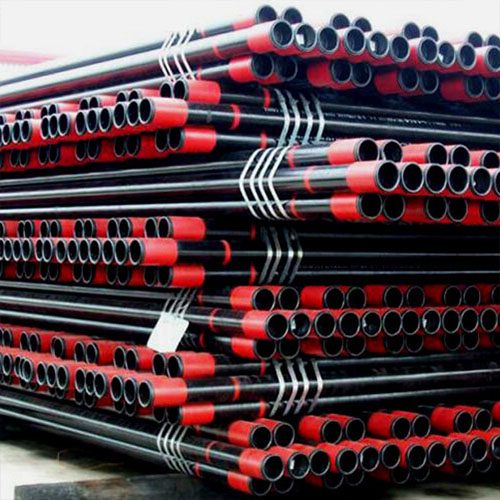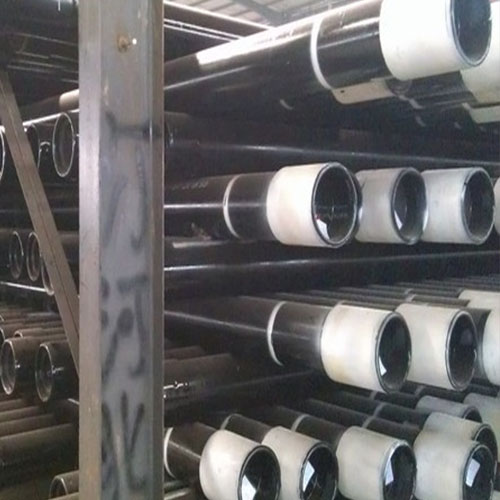Table of Contents
Understanding the Differences Between Seamless and Welded Steel Casing Drill Pipes in Oil Well Drilling
In the oil and gas industry, the drilling process is a critical operation that requires the use of specialized equipment. Among these, the steel casing drill pipe or tubing plays a pivotal role in ensuring the success of the drilling process. These pipes are used to line the wellbore, providing a stable structure that prevents the well from collapsing. They also serve as a conduit for the drilling mud and cuttings to be transported to the surface. The choice between seamless and welded steel casing drill pipes can significantly impact the efficiency and cost-effectiveness of oil well drilling operations.
Seamless steel casing drill pipes are manufactured through a complex process that involves heating a solid steel billet and then piercing it with a mandrel to create a hollow tube. The tube is then stretched and rolled until it reaches the desired size and wall thickness. This process results in a pipe with no seams or joints, making it highly resistant to pressure and less likely to leak or fail. Seamless pipes are typically more expensive than their welded counterparts due to the complexity of their manufacturing process. However, their superior strength and durability often justify the higher cost, especially in high-pressure drilling environments.
On the other hand, welded steel casing drill pipes are made by bending and forming steel plates or coils into the shape of a pipe. The edges are then welded together to form a seam. This process is simpler and less costly than the manufacturing of seamless pipes, making welded pipes a more economical choice for many oilfield operations. However, the presence of a seam can make these pipes less resistant to pressure and more prone to failure, especially in high-stress environments. Therefore, while welded pipes may be more cost-effective upfront, they may require more frequent replacement and maintenance, potentially increasing long-term costs.
Stainless Steel is another popular material for casing drill pipes due to its excellent corrosion resistance. This makes it an ideal choice for drilling in environments with high Levels of corrosive substances. Stainless steel casing pipes are also highly durable and can withstand high pressures, making them suitable for deep well drilling. However, like seamless pipes, stainless steel casing pipes tend to be more expensive than their Carbon Steel counterparts.
In conclusion, the choice between seamless and welded steel casing drill pipes in oil well drilling depends on several factors, including the drilling Environment, budget, and long-term maintenance considerations. Seamless pipes offer superior strength and durability, making them ideal for high-pressure environments. Welded pipes, on the other hand, are more cost-effective upfront but may require more maintenance in the long run. Stainless steel casing pipes offer excellent corrosion resistance, making them suitable for drilling in corrosive environments. Regardless of the type of pipe chosen, it is crucial to consider the long-term implications of this decision on the efficiency and cost-effectiveness of oil well drilling operations.
Evaluating the Impact of Stainless Steel Casing Drill Pipe Prices on Oilfield Operations
The oil and gas industry is a complex and multifaceted sector, with numerous variables influencing its operations. One such variable that significantly impacts the industry’s operations is the price of stainless steel casing drill pipe, a critical component in oil well drilling. This article aims to evaluate the impact of stainless steel casing drill pipe prices on oilfield operations.

Stainless steel casing drill pipes, whether seamless, welded, or stainless steel, are integral to the oil drilling process. They are used to line the wellbore, providing a stable structure that prevents the well from collapsing. Additionally, these pipes also serve as a conduit for the extraction of oil and gas from underground reservoirs. The quality, durability, and reliability of these pipes are paramount, as any failure can Lead to catastrophic consequences, including environmental damage and significant financial losses.

The price of stainless steel casing drill pipes is influenced by several factors, including the cost of raw materials, production costs, and market demand. Over the past few years, the industry has witnessed fluctuations in the prices of these pipes, primarily due to changes in the global steel market. For instance, increased tariffs on steel imports and changes in steel production have led to a surge in steel prices, subsequently affecting the cost of stainless steel casing drill pipes.
The impact of these price fluctuations on oilfield operations is significant. Firstly, higher casing drill pipe prices increase the overall cost of drilling operations. This can lead to reduced profitability for oil companies, particularly in a market characterized by volatile oil prices. In some cases, higher drill pipe costs may even render some drilling projects economically unfeasible, leading to a reduction in oil exploration and production activities.
Secondly, the increased cost of stainless steel casing drill pipes can also affect the quality of drilling operations. In an attempt to cut costs, some oil companies may opt for cheaper, lower-quality pipes. However, this can compromise the integrity of the well, increasing the risk of well failure and potential environmental disasters. Therefore, it is crucial for oil companies to strike a balance between cost-effectiveness and quality when selecting casing drill pipes.
Lastly, the price of stainless steel casing drill pipes can also influence the decision-making process in oilfield operations. For instance, in periods of high drill pipe prices, oil companies may choose to delay or cancel planned drilling projects. On the other hand, periods of low drill pipe prices may encourage companies to accelerate their drilling activities, potentially leading to overproduction and a subsequent drop in oil prices.
In conclusion, the price of stainless steel casing drill pipes plays a crucial role in shaping oilfield operations. It not only affects the cost and quality of drilling operations but also influences strategic decisions within the oil and gas industry. Therefore, it is essential for industry stakeholders to closely monitor and manage these costs to ensure the sustainability and profitability of their operations.
